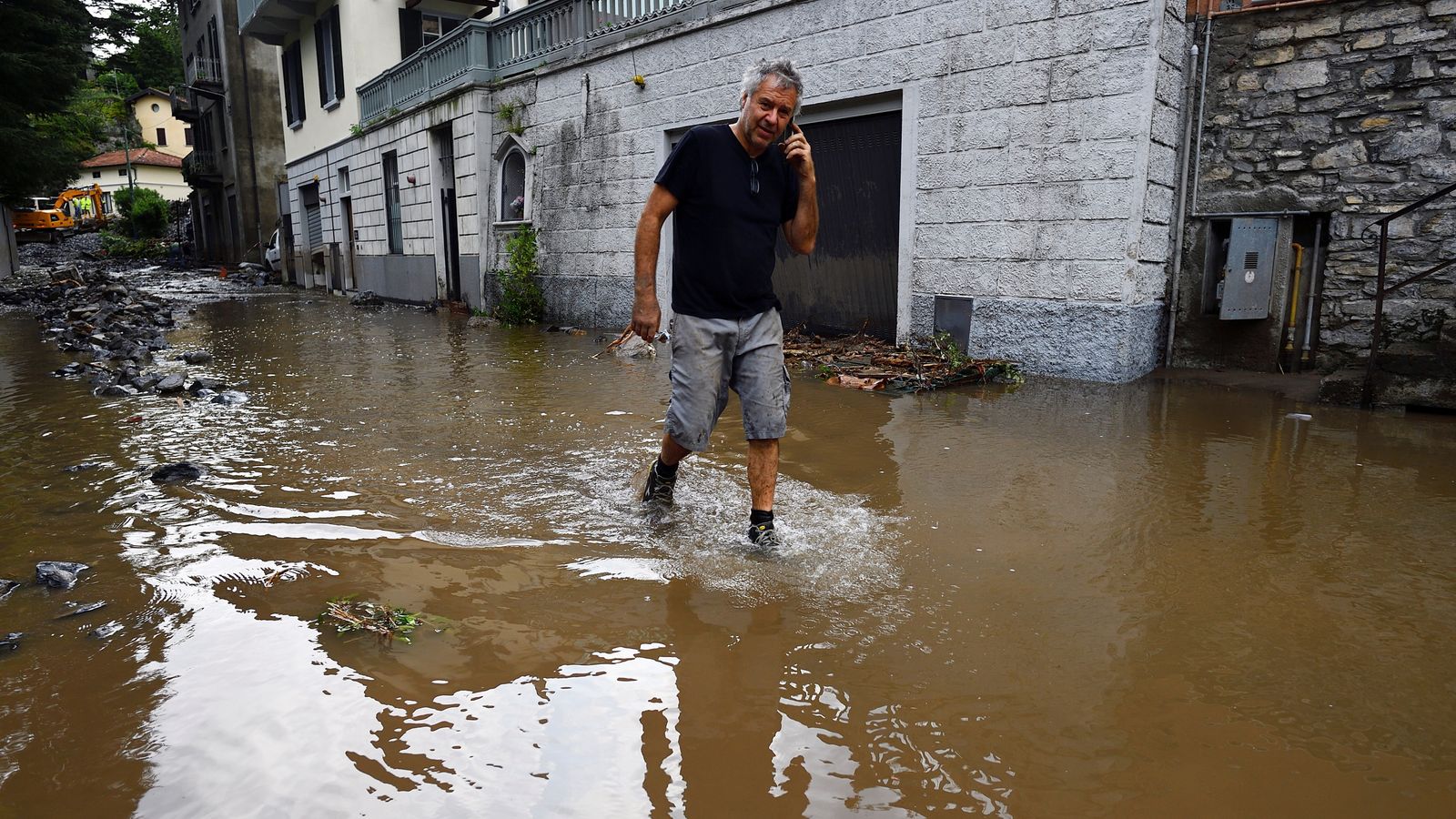More than 60 people have been rescued after towns surrounding Lake Como were hit by mudslides and floods as extreme weather gripped northern Italy.
Firefighters grappled with debris to save dozens trapped in their homes as storms battered the picturesque lake, which is popular among tourists.
An elderly woman blocked in her house was brought to safety, along with a person with a disability and a carer isolated by a landslide.
No deaths or injuries were reported.
Some 50 residents were trapped in their homes when a landslide caused a gas leak in the hardest-hit town, Brienno, located on the lake’s western shore.
Further south in Cernobbio, an apartment building threatened with flooding was evacuated by fire crews.
Agricultural lobby group Coldiretti claim extreme weather has intensified in recent years, citing more frequent, sudden and violent storms, as well as short and intense rainfall and rapid changes from sunny skies to storms.
“We are facing in Italy the consequences of climate change, with a trend toward tropicalisation and the multiplication of extreme events,” the group said.
The group estimates there has been 14 billion euros (£12bn) of damage over the last decade to agriculture production, buildings and infrastructure due to climate change-provoked events such as flooding and landslides.
The extreme weather in Lake Como comes just a day after hailstones the size of tennis balls damaged nearly 100 cars and disrupted traffic on a major road near Bologna in northern Italy.
Footage showed cars with windshields shattered by the hailstones on the side of the road as drivers got out of their vehicles to look at survey the damage.
Hailstorms are a common occurrence during the summer in Italy’s Po River Valley.
But the strength and frequency of hailstorms this year has made the phenomenon “unusual”, according to meteorologist Luca Lombroso.
Analysis shows that hailstorms are occurring at the rate of 11 a day this summer, Coldiretti said, and 386 have taken place so far this year – a stark rise from 92 in 2018 and 198 in 2019.
Up to six years ago, only a few dozen hailstorms took place each year.
“The dimension of the hailstones also has changed, growing considerably in the last years with real ice blocks falling from the sky – even bigger than tennis balls,” the group said.
Hailstorms can wipe out entire fields or vegetable and fruit orchards, and Coldiretti attributes a 40% drop in peach and apricot harvests and a 50% drop in nectarines to “this crazy climate”.






















